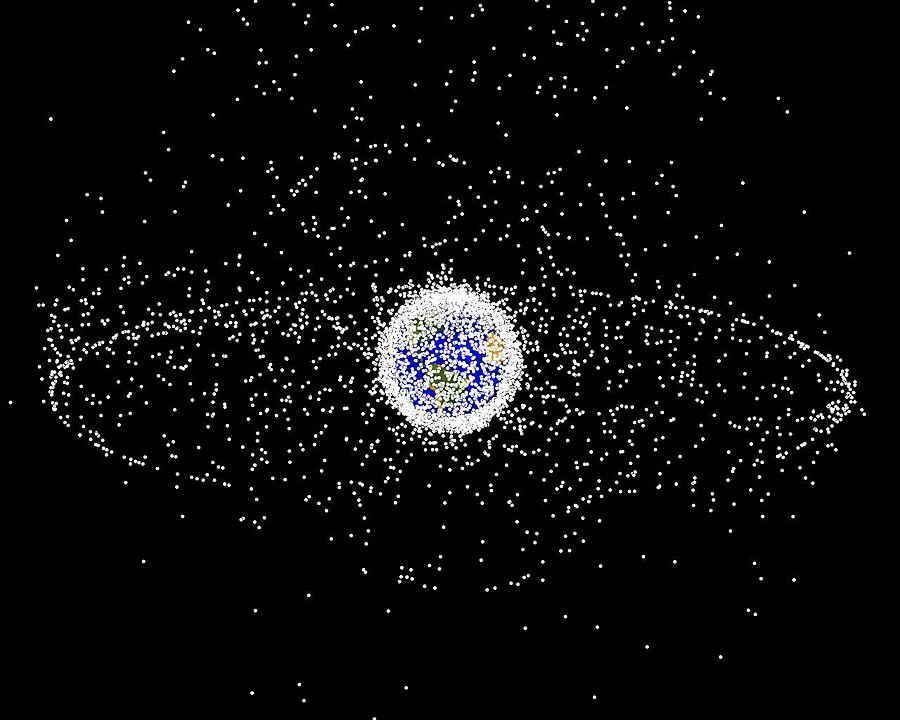Space exploration has led to an unintended consequence: the accumulation of orbital debris or better to call it a silent carbon footprint.
Orbital Debris: A Growing Problem
Orbital debris, also known as space junk, refers to any machinery or debris humans left in space. It can include objects such as explosions of satellites, rocket bodies and fragments from collisions between spacecraft.
Approximately 30,000 pieces of tracked debris zipping through space at speeds of up to 17,000 miles per hour. This debris is an open threat to active satellites and could disrupt essential services such as GPS, cell phone signals, and high-speed internet.
SpaceX and Private Companies’ Contribution to Space Debris
SpaceX and other private space companies have contributed to the growth of space debris through their numerous satellite launches and space missions. The overall increase in space activity has led to a higher concentration of debris in orbit.
SpaceX has significantly contributed to expanding access to space through its Falcon 9 and Falcon Heavy rockets. However, these innovative launch vehicles produce debris due to their design.
For instance, the Falcon 9 rocket jettisons its two stages during flight, leaving them to burn up in the atmosphere. But materials like aluminium can survive re-entry, becoming new orbital debris. SpaceX also pioneered the idea of vertical rocket landings, but failures during attempted booster landings have littered the oceans with debris.
However, SpaceX tries to recover boosters and reduce debris; the sheer increase in launch frequency enabled by reusability contributes to the growing orbital clutter problem.
Furthermore, other private space companies are also proliferating launch opportunities while contributing to the space debris dilemma. Blue Origin and its New Glenn rocket are designed to shed expanded rocket stages during launch.
Virgin Orbit’s air-launch system drops stages over the ocean. Even tiny CubeSat satellites from companies like Planet Labs are now criticized as a debris hazard as more get deployed from rockets and the ISS.
As the commercial space sector grows, more players mean more objects sent into orbit, accelerating space junk accumulation. Stronger global regulations and improved debris mitigation practices for private space firms are needed.

The impact of space debris on space exploration
Collision risk
Space debris could disrupt essential services such as GPS, cell phone signals, and high-speed internet. The speed of a satellite could be as high as 19,000 kilometres per hour, which is a more significant risk for functional satellites in orbit.
Overall, across all satellites, hundreds of collision avoidance manoeuvres are performed yearly, including the International Space Station (ISS).
Potential for “Kessler syndrome”
The accumulation of space debris could lead to a scenario known as “Kessler syndrome,” where collisions between orbiting pieces of debris create more debris, rendering near-Earth orbit unusable.
The Kessler Syndrome is a theoretical scenario in which Earth’s orbit is overpopulated with space junk, preventing the use of satellites in certain sections of Earth’s orbit. The Kessler Syndrome applies methods for studying asteroid belts to predict collision patterns for active satellites in Earth’s orbit.
The Kessler Syndrome not only elaborates but also predicts a cascade of orbital debris that could potentially hinder humanity’s space ambitions and activities down the road.
The Kessler Syndrome is named after former NASA scientist Donald Kessler, who laid out the basic idea in a seminal 1978 paper.
The Kessler Syndrome is a hindrance due to the domino effect between objects of sizable mass spalling off debris from the force of the collision. The fragments can then hit other objects, producing even more space debris.
Efforts to Address Space Debris
Various organizations and agencies are working to address the issue of space debris.
NASA, for example, is seeking solutions to detect, track, and remediate small space debris through its “Detect, Track, and Remediate: The Challenge of Small Space Debris” challenge.
The European Space Agency (ESA) is also working on a spacecraft with arms that simulate a Venus’ flytrap to snatch derelict bodies out of orbit, as well as developing a plan to make recycling, refurbishing, repurposing, and reusing objects in space a reality by 2030 via its Zero Debris policy.
Mainly, The European Space Agency’s (ESA) ClearSpace-1 mission aims to become the first to remove an item of space debris from orbit in 2025.
Moreover, a Chinese agency is also working on mitigating space junk projects. They launched the SJ-21 satellite in October 2021 to dump defunct satellites into the ‘Graveyard Orbit’.
Their strategy is to grab the satellite and move it towards the Graveyard Orbit in order to reduce the risk of collision. But NASA seems concerned about their own functional satellites not being grabbed by that Chinese cleaner SJ-21 satellite.
They are constantly monitoring the mitigation strategies as well as the Graveyard orbit for the security of their own missions.
The Need for Sustainable Space Exploration
To tackle the growing problem of space debris, it is crucial to promote sustainable space exploration practices. The United Nations Committee on Peaceful Uses of Outer Space has published guidelines for space debris mitigation and long-term sustainability of outer space activities.
These guidelines encourage operators to remove satellites from orbit within 25 years of completing their missions and to follow other practices to minimize the creation of space debris.
However, space junk around Earth’s orbit can also affect our planet Earth. It leaves carbon footprints silently around Earth, and we can not even see or imagine how dangerous this accumulation is. This is a significant threat to satellite communication systems, research carried out in space, and the planet itself.
References:
- https://www.nasa.gov/directorates/stmd/stmd-prizes-challenges-crowdsourcing-program/center-of-excellence-for-collaborative-innovation-coeci/coeci-news/nasa-seeks-solutions-to-detect-track-clean-up-small-space-debris/
- https://www.washingtonpost.com/opinions/interactive/2023/space-junk-debris-removal/
- https://www.esa.int/Space_Safety/Space_Debris/About_space_debris
- https://www.mckinsey.com/featured-insights/mckinsey-explainers/what-is-space-junk
- https://www.esa.int/Space_Safety/Space_Debris/About_space_debris
- https://www.nhm.ac.uk/discover/what-is-space-junk-and-why-is-it-a-problem.html
- https://www.theguardian.com/science/2022/apr/21/mind-satellite-mission-clean-up-dangerous-space-junk-astronauts-debris
- https://www.scientificamerican.com/article/space-debris-will-block-space-exploration-unless-we-start-acting-sustainably/
- https://space.skyrocket.de/doc_sdat/sj-21
- https://www.techtarget.com/whatis/definition/Kessler-Syndrome
- https://www.space.com/kessler-syndrome-space-debris
- https://earthsky.org/human-world/kessler-syndrome-colliding-satellites/
Also, Read Carbon Footprints Beyond Earth: Balancing Space Aspirations
Syeda Ambreen Zafar is a software engineer. She’s very keen in space sciences amd astronomy. She mostly writes on Space Science, social issues and conspiracy theories. She loves to write fictional stories on horror, mystery and suspense.

